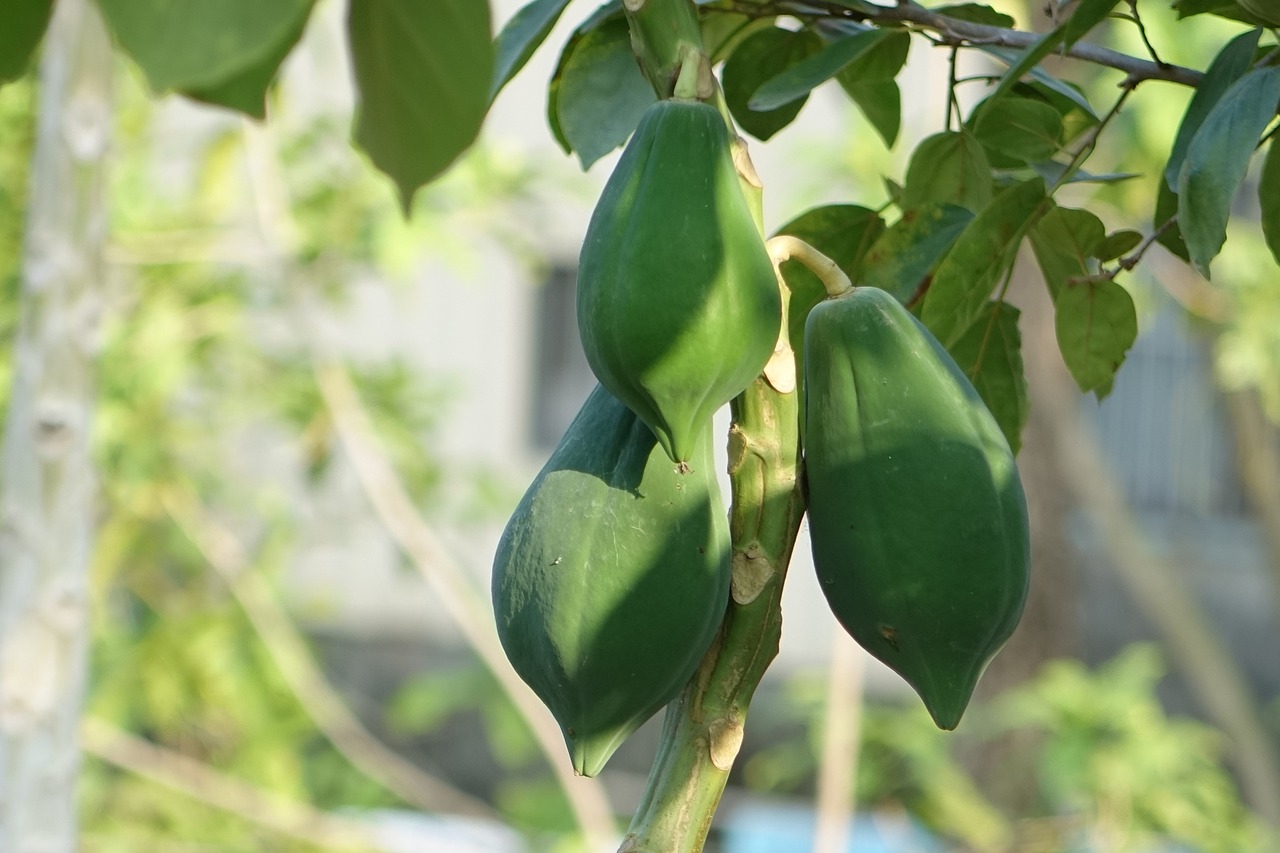Papaw Trees
 Searcy, Ark. –
Searcy, Ark. –
Pawpaw is a native shrub that grows in the United States, particularly the eastern part. The most prevalent species (Asimina triloba) is what we call American Pawpaw.
Pawpaws are a member of the custard apple family, and are the only member of this family to be found in the temperate regions of North America.
Pawpaw is a small, deciduous tree that may attain 15 to 30 feet in height. It can often be found in the forest understory, where it grows in clumps or thickets. This usually results from prolific root suckering, although seedlings may develop from fruits that drop to the ground but are uncommon and often are found some distance from a pawpaw thicket as the fruit is carried off and consumed by animals. In sunny locations, trees typically form a pyramidal shape with a single straight trunk bearing 6 to 12 inch, obovate-oblong, dark green, drooping leaves that turn yellow in the fall.
Flowers emerge before the leaves in mid-spring, with the flowering period often extending over several weeks. The blossoms exclusively occur on the previous year’s branches and may be up to 2 inches wide. Flowers are self-incompatible, which means that flowers must be cross-pollinated. Thus, pollen from an unrelated, genetically different pawpaw is necessary for fertilization and fruit set to occur.
Pollination is thought to be done by nitidulid beetles (night flying) or bottle flies (day foragers), which is consistent with the appearance of the flower that has dark, maroon-colored petals and a weak, unpleasant aroma. Fruit set is usually low in the wild due to a scarcity of pollinators. Under cultivation, some trees can produce up to 25 to 50 pounds per tree. If pollinators are scarce, hand pollination, although laborious, can be worthwhile.
The fruit, sometimes called "Ozark bananas," are oval in outline and the size and shape of your average hand grenade. When ripe, they have a soft texture and a fruity flavor reminiscent of pineapple, banana and papaya. The fruit skin starts off light green, turning blackened and ugly as it ripens. The seeds are usually as large as lima beans.
As a fruit, pawpaws have a fatal flaw. To taste good, they must be fully ripe. At that time, they have the texture of a thick pudding. Once fully ripe, they turn black at the slightest provocation. They can be stored for a week or more under refrigeration, but this completes the blackening process, and the fruit takes on a decidedly unappetizing appearance.
Tips for Planting
Pawpaws can be difficult to get established. They cannot tolerate full sun and require well-drained soil. They can't have their "feet" wet, but they can't dry out. So they are a tad fickle!
In the wild, they can be found on moist slopes and around streams and drains and rarely get over 20 feet.
How do I get my pawpaw tree to fruit?
Pawpaws need a couple of things before they can fruit:
- Plenty of sun. However, pawpaws cannot become established unless they have shade because
they cannot tolerate full sun. Again, they are fickle! When they grow larger to fruit
they will require more sun than before.
- Another pawpaw tree that is not closely related. Two un-related varieties are required
to ensure cross pollination.
- Flies for pollination. Pawpaw flowers are only pollinated by night flying beetle or flies.
Problems
Pawpaws are generally pest-free plants. They produce natural compounds (annonaceous acetogenins) in leaf, bark, and twig tissues that possess both high anti-tumor and pesticidal properties. The high level of natural defense compounds in the tree makes it highly resistant to many insects and diseases and can be grown without pesticides.
Pawpaw is the exclusive larval (caterpillar) host plant for the zebra swallowtail (Eurytides marcellus), but their feeding on leaves rarely results in much damage to mature trees.
By Sherri Sanders
County Extension Agent - Agriculture
The Cooperative Extension Service
U of A System Division of Agriculture
Media Contact: Sherri Sanders
County Extension Agent - Agriculture
U of A Division of Agriculture
Cooperative Extension Service
2400 Old Searcy Landing Road Searcy AR 72143
(501) 268-5394
ssanders@uada.edu
The Arkansas Cooperative Extension Service is an equal opportunity institution. If
you require a reasonable accommodation to participate or need materials in another
format, please contact your County Extension office (or other appropriate office)
as soon as possible. Dial 711 for Arkansas Relay.
Pursuant to 7 CFR § 15.3, the University of Arkansas System Division of Agriculture
offers all its Extension and Research programs and services (including employment)
without regard to race, color, sex, national origin, religion, age, disability, marital
or veteran status, genetic information, sexual preference, pregnancy or any other
legally protected status, and is an equal opportunity institution.